Cyclify India is reader-supported! We may receive an associate commission if you make a purchase through one of the Amazon Associate links on this page! Continue Reading…
For many bikers, cycling 20 miles a day is a hard but yet fairly achievable goal. A lot of people commute by riding 10 miles to and from work. What would be the expected amount of weight loss if you followed this daily cycling schedule?
By riding a bicycle at ten miles per hour, you can burn around 563 calories per hour. As a result, throughout the course of the 20 miles, you would burn about 1126 calories. A 1000 calorie daily calorific deficit will result in weekly weight loss of 2 pounds for the average individual.
Most amateur cyclists can easily reach a speed of 12 miles per hour. Cycling at a faster pace will increase your caloric expenditure.
If you want to lose weight while cycling 20 miles a day, there are a lot more elements to consider. In this article, I’ll examine:
- The precise kind of weight loss you should anticipate from 32km per day of cycling
- The types of weight loss you might anticipate when aiming for different distances
- 5 methods to make your bike more weight-loss-friendly
- The reasons that riding a bike is a great way to lose weight
- The many riding alternatives that you have at your disposal.
Table of Contents
Cycling 20 miles a Day for Weight Loss: What to Expect
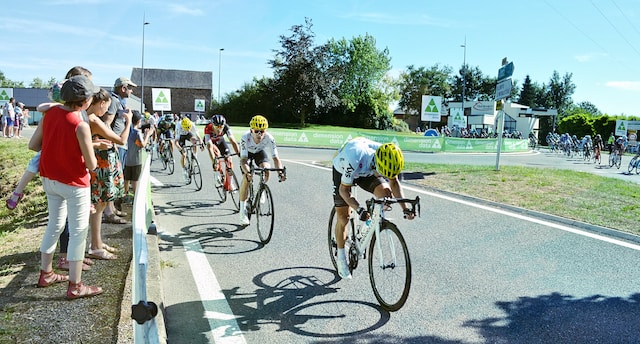
To put it briefly, cycling 20 miles a day will result in weekly weight loss of 2 pounds (1 kg) for the average cyclist. At an average speed of about 20 km/h, this is comparatively snail-paced.
About 450 to 1500 calories would be burned by an average cyclist in an hour of riding. According to the source, the average amount would often fall between 500 and 900.
This is dependent upon several things, such as:
- The ride’s intensity
- Weight
- Ages
- The kind of surface you’re riding on
For illustration, consider the 197 pounds (87 kg) average weight of a guy in the United States. This individual would burn around 550 calories an hour if he rode a bike at 10 mph. Over the course of the entire 20 miles, this would equal 1100 calories.
Remember that 10 mph is not very fast! On the other hand, if they cycled at 18 mph (very quickly!), they would burn around 1145 calories each hour, or 1172 calories total for the whole trip.
This emphasizes a very important point: speed!
Moving at a quicker pace allows you to finish the route sooner and burn more calories along the entire distance.
The number of calories you should burn by cycling at 12 mph for an hour at various body weights is displayed in the following table:
| Weight | Calories Burned Over 12 miles | Calories Burned Over 20 miles |
|---|---|---|
| 54kg (120lb) | 460 | 760 |
| 66kg (140lb) | 510 | 850 |
| 73kg (160lb) | 600 | 1000 |
| 82kg (180lb) | 670 | 1116 |
| 91kg (200lb) | 730 | 1216 |
| 100kg (220lb) | 840 | 1400 |
| 109kg (240lb) | 940 | 1566 |
Distance on a Bike for Losing Weight – Should I Ride How Many Miles?
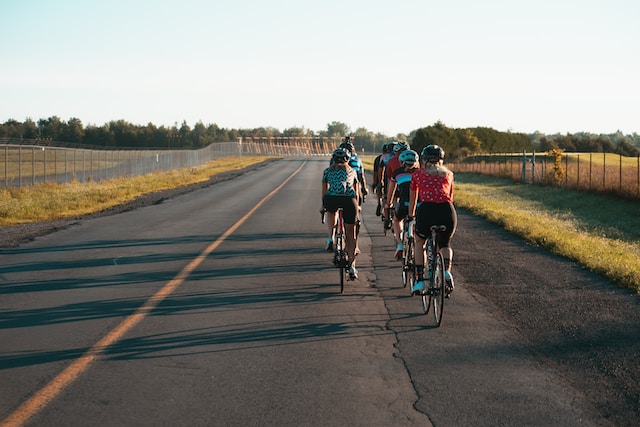
In addition to being enjoyable, biking is an excellent aerobic workout that can help with weight reduction, muscle building, and a lower risk of cardiovascular disease.
According to experts, cycling even 5 miles (8 km) a day can help you reach your weight loss goal. For even a short bike ride like this can help you burn between 250–500 calories.
You may accelerate the process by biking 10 miles every day to get to your target weight more quickly. For example, if you’re not the kind to calculate distance, bear in mind that it will take a beginning cyclist around one hour to bike ten miles.
Harvard University research indicates that riding a bike for 30 minutes at a moderate pace of 12 to 14 mph (19 to 22 kilometers per hour) can burn 298 calories for a person weighing 155 pounds (70 kilograms).
372 calories will be burned by an individual of the same weight travelling at 14–16 mph (22.5–25.5 km/h).
How Much Time Does It Take to Ride a Twenty-Mile Bike?
An hour may be all it takes to accomplish a 20-mile bike ride if you are an experienced rider who has performed rides of a comparable length in the past.
It might take up to 2 and a Half hour for an inexperienced rider. For individuals who like to ride for longer periods of time at a moderate pace, this time can be extended to several hours; there’s nothing wrong with emphasizing enjoyment during the ride.
Using Cycling to Lose Weight: 5 Effective Tips
Optimization is the name of the game!
You may achieve weight reduction and maximize the benefits of this practice by doing a number of small extra tasks in addition to cycling 20 miles a day.
These are the top 5 techniques to maximize the performance of your bicycle.
1. When riding, keep your speed steady
You have to bike in your first & second training zones if you want to reduce body fat.
It is best to ride at a pace that pushes your heart rate up to 68–79 percent of maximal heart rate in order to lose fat.
These may be installed using a cycle computer and heart rate monitor.
When cycling, you should aim to reach a slight exhaustion level while maintaining sufficient breathing capacity to carry on a conversation, if you neglect to have them. The majority of your training time should be dedicated to this level of activity, also referred to as base training.
Even though it’s still tough, you won’t feel completely worn out after each ride. Aim to dedicate around one hour each day to it.
Related: What should be the average cycling speed?
2. Ride Your Bicycle To Work

Making the most of your commute is a great way to engage in cycling-related fitness. It is a great way to stay active because it has been demonstrated to help with weight reduction.
Better still, the University of East Anglia‘s research showed just how easy it is—participants lost an average of 15 pounds (7 kilos) after converting to cycling as a vehicle to work.
For those who don’t commute, cycling to do daily errands or simply spending 30 minutes outside each morning can be an effective way to lose weight while cycling. By putting yourself in a calorie deficit and increasing the intensity of your workouts, you may lose weight more quickly.
3. Provide the Right Nutrition for Yourself
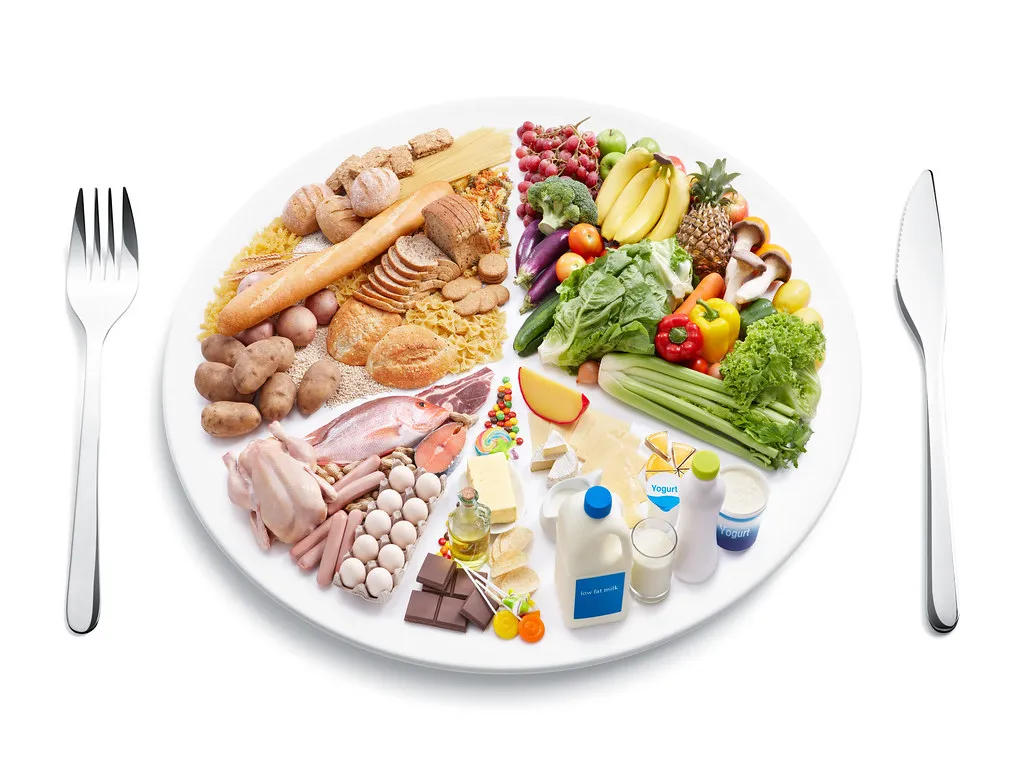
When cycling, it is not advisable to go on a starvation diet, even if a calorie deficit is required for weight reduction.
Rather, concentrate on finding the right balance. Although some people can go out on an empty stomach, it’s preferable to fuel yourself with carbohydrates and protein at the right moments to maximize your workout.
If you want to ride your bike for an extended period of time in order to lose some pounds, you may wish to pack some energy bars or gels. When you ride a lot, these easily transportable fuel sources will raise your blood sugar and prolong your cycling time.
4. Include two or three intense sessions each week.
Increased cardiovascular fitness through high-intensity interval training increases your body’s ability to burn fat.
If you’re feeling particularly fit, you may add these rides to your normal rides, change up the order so that you perform a high-intensity session after a moderate ride, or replace two or three of your regular rides with these ones.
The greater part of the workout should be done at a pace that prevents you from carrying on a conversation, or between 70 and 90 percent of your maximum heart rate.
For the length of an exercise, interval training is far better than steady state training.
5. Make HIIT a Part of Your Cycling
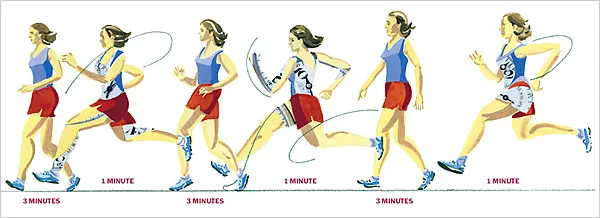
Your best hope for losing weight could be to find high-intensity interval training (HIIT) cycling routines.
A form of cardiovascular exercise called high-intensity interval training (HIIT) alternates between high-intensity and rest intervals. It’s a great approach to increase the intensity of your workout if you’re riding to become in shape.
One way to work out would be to bike at maximum speed for thirty seconds, take ten to twenty seconds off, and then continue for twenty to thirty minutes.
Since it burns a lot of calories and assists in creating the crucial calorie deficit, high-intensity interval exercise, or HIIT, is great for cycle weight loss.
Because this kind of cycling can be done in a range of environments, it’s fantastic for losing weight. Additionally, studies have shown that high-intensity interval training improves endurance and glucose metabolism.
An excellent indoor riding workout for HIIT fitness training is shown in this
5 Reasons Cycling Is the Best Exercise for Losing Weight
Cycling helps with weight reduction since it increases aerobic fitness and burns calories. That being said, it can be stated about almost any physical activity, so why is riding a better option? Find out by reading on!
1. Sustainability
Cycling is the most sustainable sport. This is especially true for beginners and/or people who are overweight. Other options include jogging, cross-training, and even walking.
Since your bike supports the majority of your weight during riding, it’s a non-load-bearing type of exercise.
Further cycling is a low-impact workout. To put it another way, this lessens the stress on the articulations in the body.
Because of this, a lot of people are able to ride for far longer than they could when performing workouts on the ground. In order to increase total energy expenditure and produce a training stimulus that improves fitness, that is essential.
2. Hobby

A person may quit exercising for a number of reasons, such as lack of funds, time restraints, or a desire to engage in other activities.
What is most depressing, though, is the overall lack of motivation. At the start of every year, a lot of us still make resolutions to exercise more regularly, but we rarely follow through on these promises.
It usually happens because, We still haven’t figured out the perfect schedule, which is a much simpler explanation than you might imagine. Professional work can lose its passion and turn into a chore if you are not enjoying it.
But in order to stick with it, you have to think of cycling or merely another acitivity that you wanna do as more than just a form of sport; you’ll be happier and more dedicated to the sport if you do this.
3. Cycling improves Aerobic Endurance
For both short-term and long-term weight loss, building aerobic endurance is crucial, albeit it is not specific to cycling. Work output in a given time is determined by the rate at which fuel is transformed into usable energy.
Performing endurance exercises, like cycling, increases your hourly burn rate for both fat and glucose.
For this reason, we value physical training more than cardio when it comes to burning calories. You won’t be able to burn more fat down the road, though, if your only goal in exercising is to lose weight.
4. Cycling is a very routine activity.
It’s crucial to schedule recovery and rest periods into your exercise regimen.
Unfortunately, the amount of exercise stress that training applies dictates how long one needs to recover between workouts. Hence, you can only train for a certain amount of time each week because more demanding exercises require a much longer recovery period.
Cycling is a low-impact, non-weight-bearing activity that makes it possible to train extensively with little chance of damage.
5. Fat Burning Rate
Fat burning depends on the movement of fatty acids from the body’s fat reserves to the working muscles.
Increased levels of protein that bind fatty acids and enzymes that transport fat are achieved through endurance cycling training. Enhancing your physical fitness level is the key to achieving the goal of burning more fat by utilising more oxygen.
6. Enhanced Muscular Power

The leg muscles (quads, hamstrings, and calves) and the abdominal muscles (to an extent) benefit the most from a cycling workout, but the core muscles can see benefits as well.
Not only does it strengthen your muscles and help you lose weight, but it is also low-impact, which means that it has minimal to no adverse impacts on your bones and joints.
Anyone who wants to decrease their body fat before engaging in more demanding sports, such as running or weightlifting, should definitely try this.
Does Bicycling Help Reduce Belly Fat?

Riding a bike can help you reduce belly fat since it is an aerobic exercise that increases your body’s natural ability to burn fat by causing a calorie deficit.
One of the best ways to lose that stubborn belly fat is to hop on a bike and perform high-intensity interval exercise.
You can consistently increase the rate of your heart to about 100% with it, which speeds up your metabolism, burns off a lot of calories, & improves your physical fitness.
Ideally, your schedule should include a range of exercise intensities to optimise your fitness gains and allow for optimal recovery in between strenuous efforts. Considerations like these should be made when scheduling cycling exercises around your running regimen. (Reference)
Related: 18 Tips to Lose Weight with Indoor Cycling you must know.
Alternatives for New Riders
There are several alternatives available when riding a bicycle, so you may choose the one that works best for you. The most popular indoor and outdoor form bike riding are listed below.
Savour the Interior
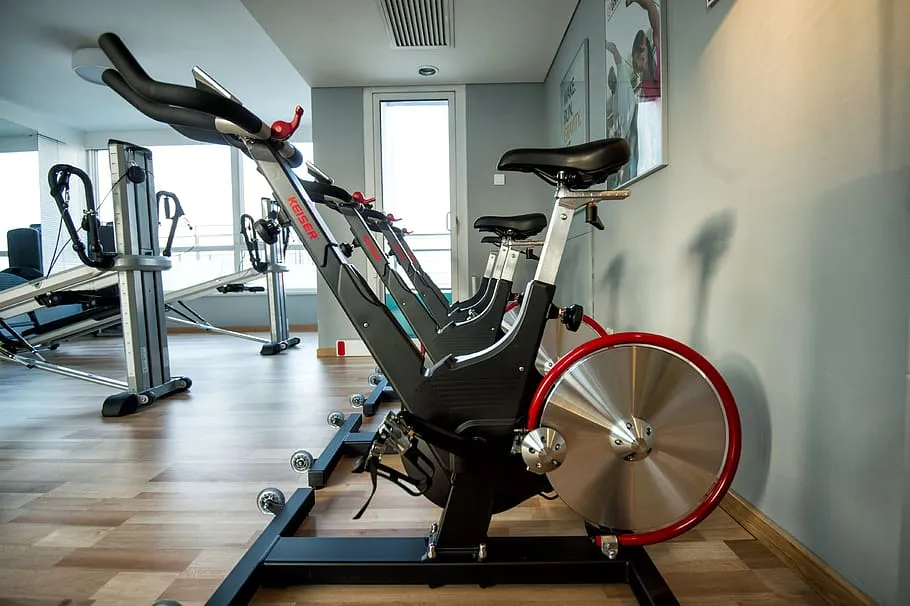
Are you someone who prefers staying than going out? Here are some ideas for cycling indoors:
An Stationary Bike, or Peloton
You may work out on a great, personalised exercise bike whether you own one at home or use one at the gym.
With so many programmable options available, users are easily able to customise the length, tempo, and intensity of the workout.
Spin classes
For those that want a little additional push to complete their bike workout, this may be a fantastic alternative.
Handcycle
In case you are unable to use a conventional bike, a handcycle might be an excellent substitute for regular stationary riding. As opposed to using your legs, this machine is driven by your arms.
Investigate the Outside

Mountain, road, and trail biking are just a few of the outdoor bicycle activities you may do when you want to escape the house and take in the scenery. Instead of taking your car somewhere you need to go, why not ride your bike?
But that can’t happen just once. You must include riding in your regular exercise regimen if you intend to use it as a weight loss strategy.
There are several applications that let you log the distance and/or intensity of your workout. While you strive toward your goals, an app that tracks your fitness progress might be a great way to keep yourself inspired.
Related: Road bike vs Mountain bike for Weight loss: Which one Should you Pick?
A 20-Mile Ride: What to Do to Get Ready?
It’s not easy to bike 20 miles. These are easy ways to get your body ready for exercise, along with some pointers to remember while working out, so that you not only finish it but enjoy it as well.
Get yourself a Heart Rate Monitor.
Feeling the need to give it your all right from the beginning of a workout is common, but it’s unlikely to help you succeed.
It’s important to ensure that the majority of any extended or long-distance exercise you perform takes place in your aerobic zone.
The most sustainable form of exercise is aerobic, which is performed at a heart rate between 60 and 75 percent of maximum heart rate.
Investing in a heart rate monitor & riding within this range can help guarantee that you have enough energy to finish your 20 miles.
Consume fluids.
A crucial aspect of your preparation is making sure you are adequately hydrated before your ride.
An essential part of controlling your body’s temperature is making sure you have enough water in it. It is normal to perspire while riding a long distance by bicycle, particularly in warm weather.
When your body is adequately hydrated, heat is transferred from the inside to the outside of the skin through sweat, which helps the blood flow through the body more efficiently.
Pre-running hydration is crucial, and remember to carry water with you to stay hydrated during your ride. For those who are serious about cycling, investing in something like camelback drinking pouches, which make it easier to drink while riding, may be worthwhile.
Energize your body
In any exercise regimen, but particularly one this intense, dieting and fueling are crucial components, as we have previously discussed.
Ensure that you eat a light yet nourishing meal before you go bicycling. If you plan to go biking in the morning, have a bowl of oatmeal and some yogurt.
Aside from packing for hunger, you should also factor in the possibility of experiencing hunger during your journey. A simple solution is to grab a bar or a banana.
Summary of Cycling 20 Miles a Day.
Having a great time is one of the most beautiful things about riding a bicycle. There’s enough to enjoy so that one could easily even forget you’re working out, regardless of what you like most: shredding up rocky mountain bike routes, racing down meandering rural roads, riding alone for introspection, or hanging out with pals!
In summary, riding a bicycle is an excellent physical activity that promotes and maintains weight reduction with many other benefits. Additionally, it strengthens your heart, your stamina, and the caliber of your social relationships. Finally, it’s a great interest that may develop into a full-blown obsession if given enough time!


0 Comments